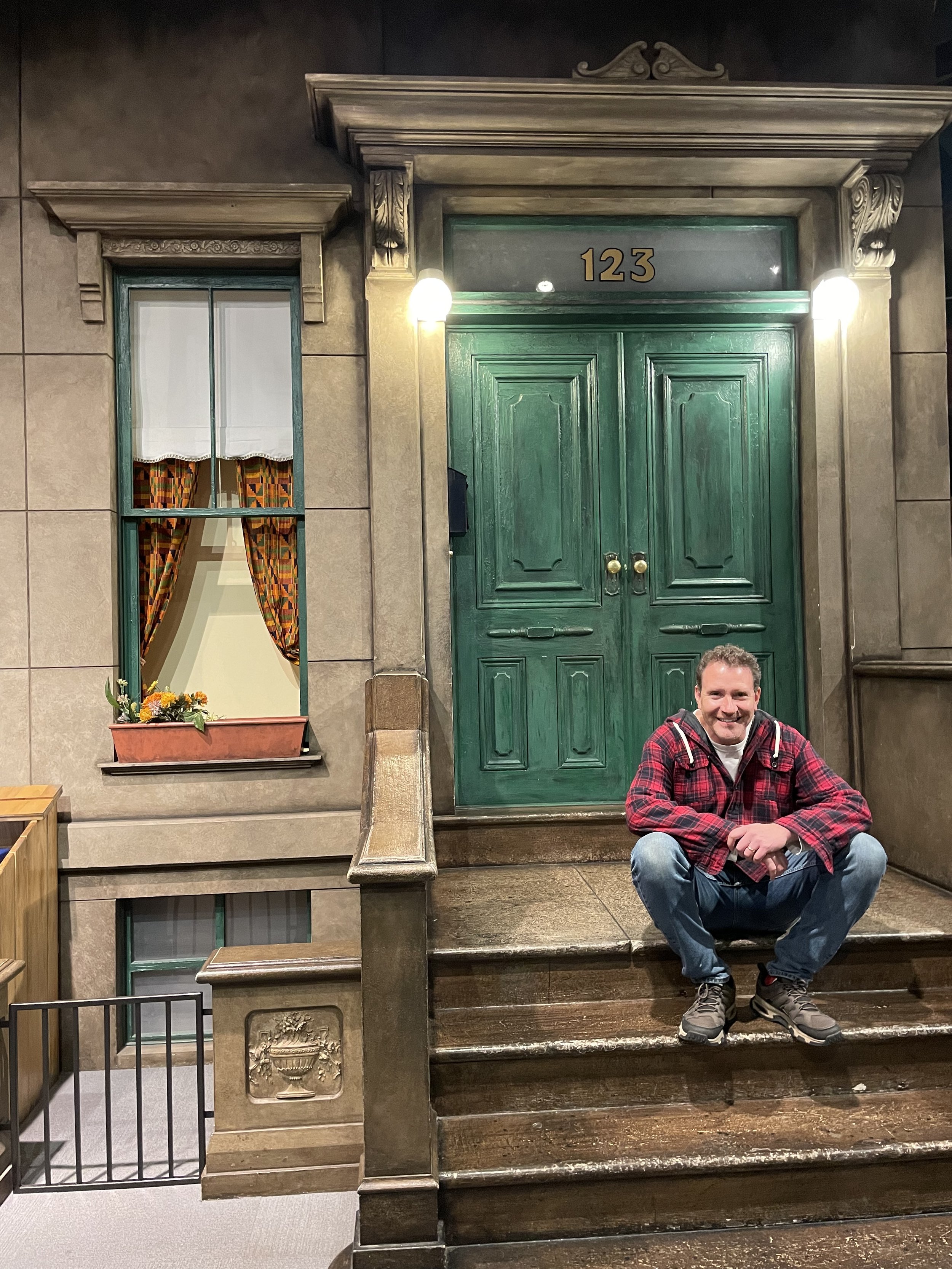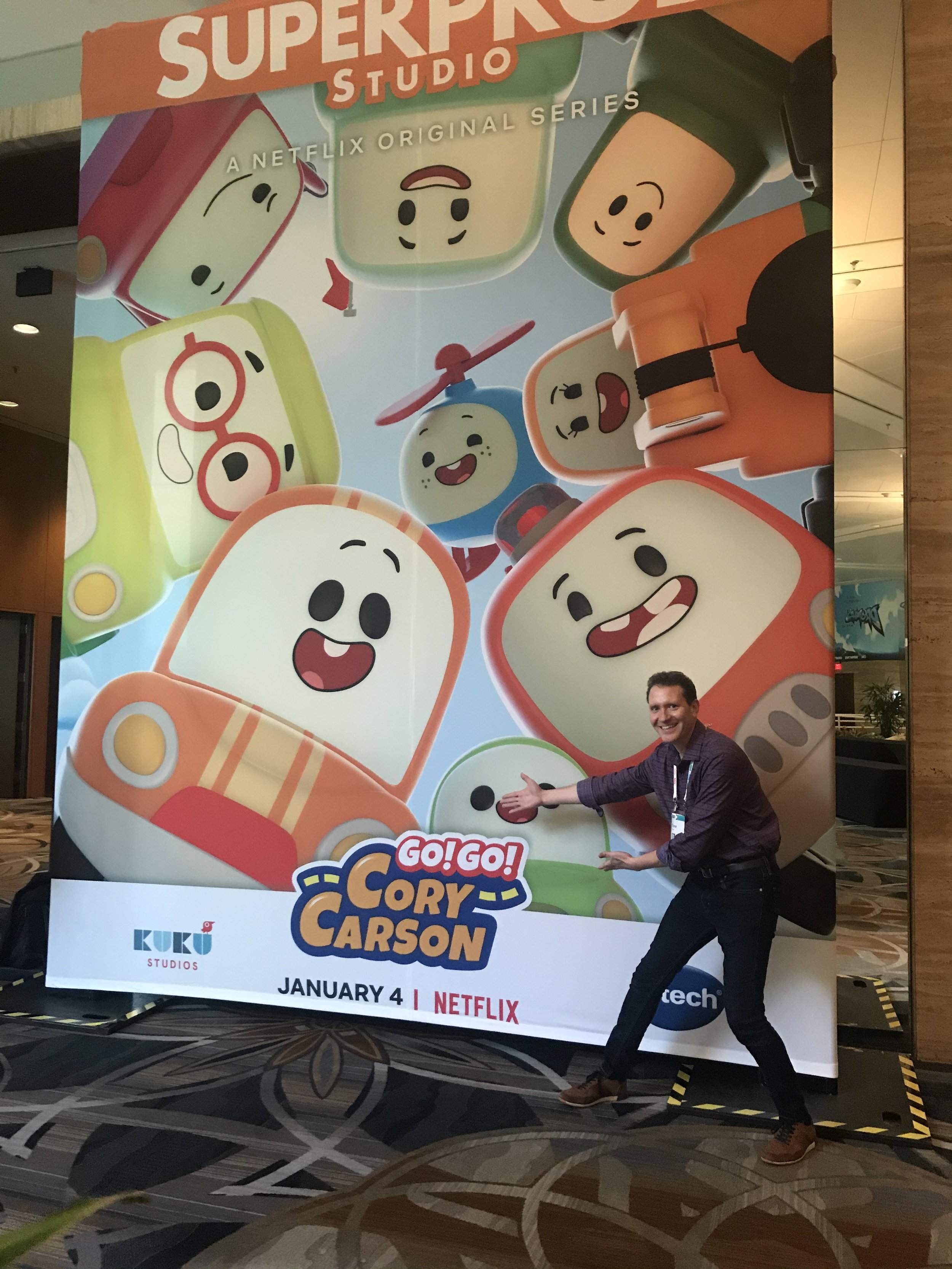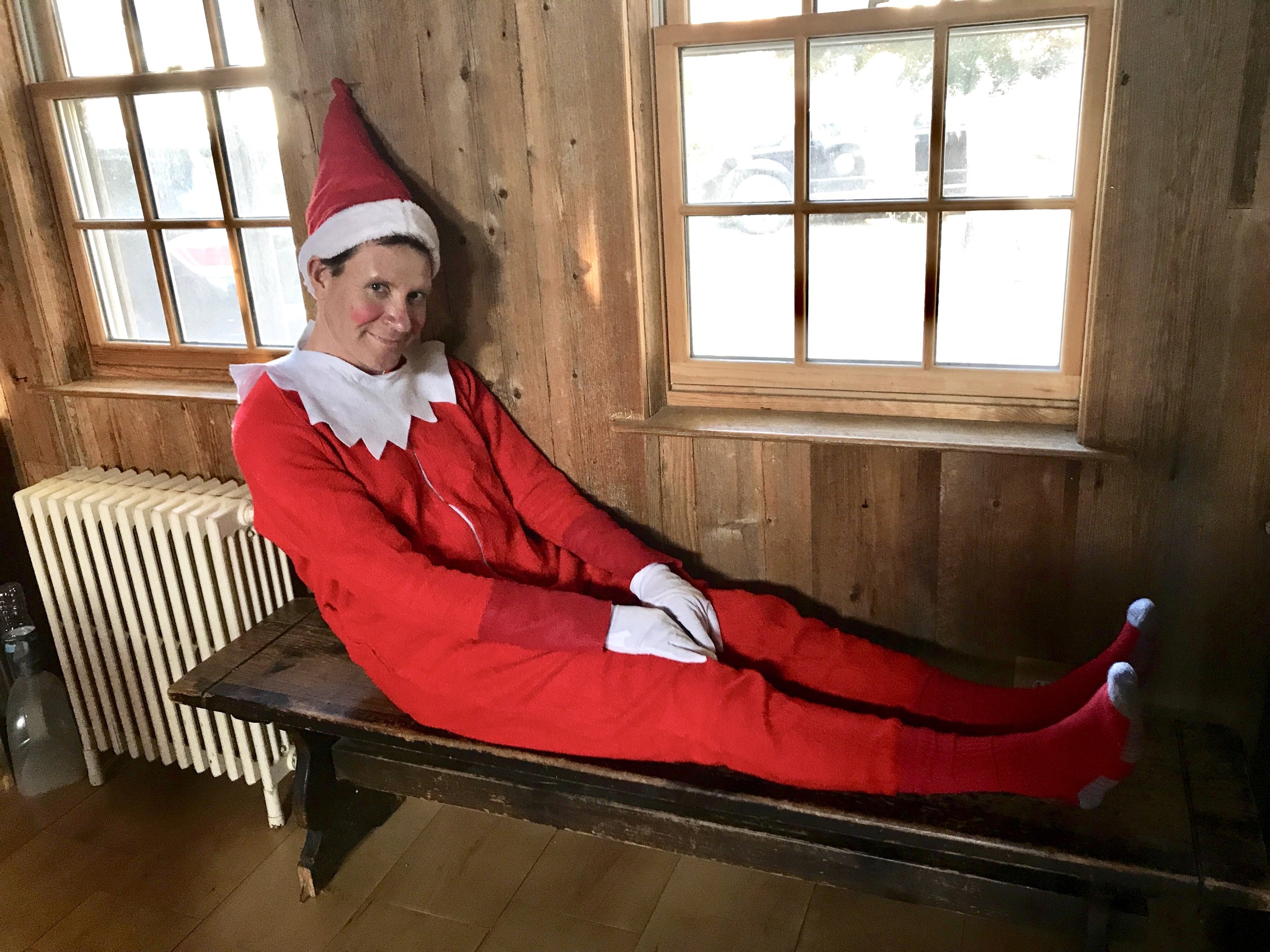After congratulating Tone on his ninth anniversary at FableVision and the rebranding of Moonladder, FableVision’s film and television division, let’s take this oppor-tone-ity to learn more about Tone Thyne. As Vice President of Moonladder, award-winning creative executive Tone focuses on creating, showrunning, and co-producing animated and live-action properties. By drawing on his personal experiences and meeting children at their level, he sets the tone for his broadcasting work, hoping to create educational, inspirational, and relatable content for kids.
“The best show creators are highly nostalgic in nature,” said Tone. “Reaching into the past to dust off experiences and feelings that we remember as kids (or remembering gems from our own childrens’ growing up) is the best way to create characters and experiences that viewers will relate to. Most of the stories I write are ripped from the pages of the Thyne house.”
Read on to learn more about Tone’s creative journey, advice for aspiring children’s content creators, his latest hobby, and what he thinks about Woody from Toy Story.
What’s your “journey to FableVision” story?
Sesame Street and Mister Rogers' Neighborhood have always been some of my greatest sources of inspiration. Each show seamlessly educates viewers by way of engaging characters and compelling stories. The learning is never didactic since the content is so entertaining. How can you even taste the spinach when it’s chopped up and mixed into a delicious milkshake? This kind of dedication to create meaningful content with a whimsical twist lines up beautifully with FableVision’s 200-year mission to move the world to a better place through media, storytelling, and technology. I was thrilled to join FableVision in 2014 to create original content with a studio that embodies my outlook on the positive power of children’s media through purposeful storytelling.
Congratulations on the rebrand of Moonladder! Can you tell us more about FableVision’s newest group?
It’s an exciting time for FableVision. We are expanding in step with the industry’s growing need for original content. Since our studio creates original properties in the audio space with our audiyo-yo group and original games with our FableVision Games team, we felt it was fitting to distinguish FableVision’s original film and television properties with their own distinction as well. And so, Moonladder was born.
We know that a kinder world begins with the bonds we form between young viewers and aspirational characters. Today, there is a notable focus on children’s media platforms to incorporate learning goals that lead to positive change in our world: diversity, gratitude, giving back to your community, inclusion, mindfulness, equity, and so on. Creating stories that inspire children to think about and interact with others in meaningful ways is in perfect alignment with Moonladder’s North Star.
Rachel Marcus joined our team in February of this year and we are thrilled that her creativity and expertise in broadcast distribution and financing will help place Moonladder’s meaningful content with appropriate homes on important broadcast platforms around the world.
Before you found your calling in creating, writing, and showrunning animated properties, you were an animator. Where did your creative journey take you?
I studied animation at The University of the Arts in Philadelphia, and cut my teeth in the real world at Walt Disney Feature Animation (great place to work, a little bit of a Mickey Mouse operation). I began there in production on groundbreaking films like The Lion King, Pocahontas, Mulan, and The Hunchback of Notre Dame. Over my 12 years at Disney, I worked on other animated jewels like Tarzan, Fantasia 2000, Atlantis, and Toy Story. I left in 2001 to follow my lifelong dream of creating educational content for kids and had the incredible opportunity to animate segments on the “Letter I” and the “Letter N” for Sesame Street (it was my IN!). This eventually led to my producing animation at Little Airplane Productions where I produced animated series such as The Wonder Pets!, among others. While at Little Airplane, I co-created The Adventures of Napkin Man! Fueled by the thrill of creating my own series, I packed up my expertise and headed to FableVision to join superhero forces with the dream team at the studio to create some of the world’s most meaningful content.
What was your time at Disney like, working on blockbuster films that many kids grew up on and cherish?
It was unlike any experience I had ever had. The Great Masters of Animation were creating world-famous and culturally indelible characters literally right in front of me. I remember being in Michael Surrey’s office while he was sketching out options for what Timon could look like – or in Ken Duncan’s office while he was dreaming up Jane from Tarzan. I had amazing “front row seats” to recording sessions with notable talent like Tom Hanks, Demi Moore, Catherine O’Hara, among so many others. Music meetings with Alan Menken and Stephen Schwartz. What an absolute thrill. And knowing that the content that we made at Disney has such a global appeal and can impact people around the world in a positive way is nothing shy of heartwarming. Disney was a Master Class in making something from the very germ of an idea to post production and distribution. Being a part of that process helped mold my production skills, allowing me a 360 degree view of every aspect of creating content.
What attracted you to children’s television?
I was born the same year that Sesame Street was born and literally grew up watching the show. It had a profound impact on me, which helped me realize how effective and creative children’s media can be, especially on television. Creating children’s content that has the power to positively shape the citizens of tomorrow is a privilege that I’m grateful for every day.
Wonder Pets! Schoolhouse
What’s the key ingredient for all of your projects?
Quite simply: PERSONAL EXPERIENCE. Viewers need to connect with content that they consume. The best way to connect with content is to relate to it in some way. The most effective tool for creating relatable content is to draw directly from personal experiences. Viewers can feel that authenticity.
On a train one day, I was tickled to watch a playful interaction between a mother and her baby. Each time the mother handed the baby his soft toy, he would throw it onto the ground in a fit of giggles. I was mesmerized. So, when Sesame Street called looking for a short film about counting, I drew on this real life experience and created The Silliest Counting Show, a piece showcasing a little girl attempting to count soft blocks with a playful baby who continuously throws them on the floor. I was able to harness the joy and playfulness of the real world experience in our short film.
Considering the importance of “lived experiences” in creating authentic content, it’s vital to have a broad range of voices at the table that represent the experiences characters portray on screen, whether cultural, historical, or personal.
What advice do you have for aspiring kids’ content creators?
Create what you know. You can’t tell stories or develop characters that aren’t close to you or it will reek of falseness.
Also, know your audience. When my daughter celebrated her third birthday, I took tons of pictures of the adorable party, but when I looked at them later, I realized that they didn’t capture the magic of what I experienced in person. On her next birthday, I got down on my knee and took photos that were on an eye-level with the kids. Those photos put me right back at the party. Being on the same level with the kids had a real magic to it. There’s a famous clip of Mister Rogers speaking with a child in a wheelchair on his show. Mister Rogers doesn’t stand up and talk down to him, he crouches next to him, asks him if he can lean on his chair, and talks face-to-face with him. He literally gets down on the same level as his viewers. Metaphorically, children’s content creators need to join our viewers at their level.
And finally, give your characters flaws. Young viewers recognize flaws and relate to them. Showcasing “perfect” characters leaves a void between the viewer and the character they should be relating to. Whether a character is too impulsive or impatient or a little clumsy, young viewers should be able to look at a character and say, “That’s me. I know that person, I can relate to them.”
What are some of your hobbies?
I’ve been converting an old potting shed in my backyard into an art studio with an incredible custom floor. I bought 16,000 classic #2 pencils and created a herringbone parquet floor with a layer of epoxy over top. It’s super fun and immensely inspiring. This is where all the great future ideas will be born!
More About Tone
Favorite show? Mister Rogers’ Neighborhood, of course.
Favorite movie? It’s a Wonderful Life, of course.
Favorite game?
My kids made up a game they call The Chain Game. We play it on car rides or at the dinner table. One person plays a song, then the next person picks a new song that is linked in some way through lyrics, theme, guitar riff… anything. It’s DJ Round Robin.
Favorite place traveled? Crayola Experience in Easton, PA.
Favorite type of music to listen to while working?
Somehow sad music helps me come up with great creative ideas. The sadder the music, the better. I search Spotify for “Sad Playlists,” “The Saddest Music of all Time,” or “The Weepiest Break Up Songs.” When I put on my headphones and announce, “I’m going into my sad cave,” everyone knows I have some ideas to come up with.
Favorite practical joke?
I began my first day at FableVision on April Fools’ Day. I came into the studio with a tray covered in foil and announced that I always bring brownies to commemorate my first day on a new job. When the staff pulled the foil away, they discovered a pile of Brown E’s that I had cut out of construction paper. They’ve never forgiven me.
Concept art for Woody, featuring Tone’s blue eyes
A Tone fun fact that most people don’t know?
At Disney Feature Animation, the characters the artists create always seem to end up looking like the coworkers they spend so much time with. Everyone there is seemingly somebody. It’s like working at a theme park – Gaston and Pocahontas were great friends of mine and Belle was my boss. Woody from Toy Story bears a striking resemblance to me. Thankfully, my boots are free from snakes though.










